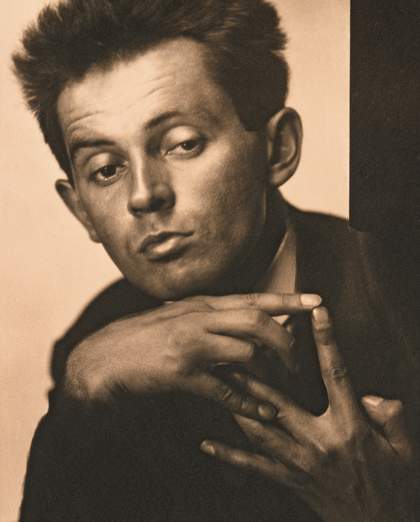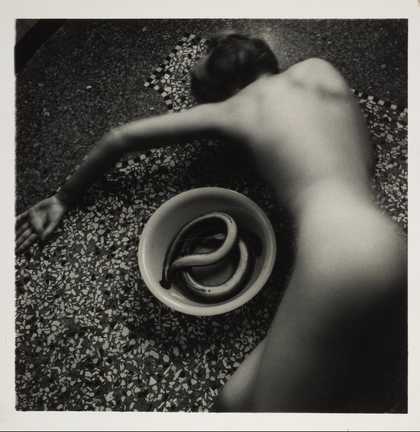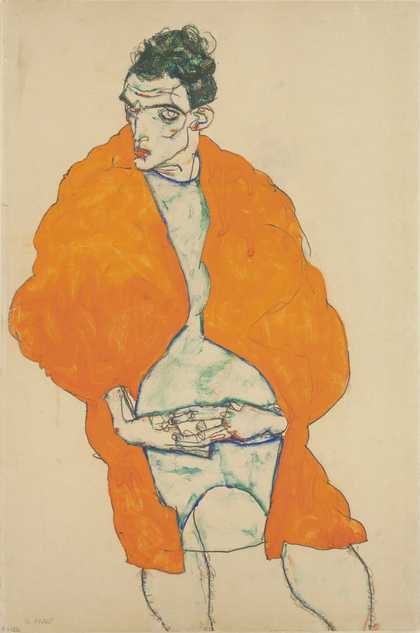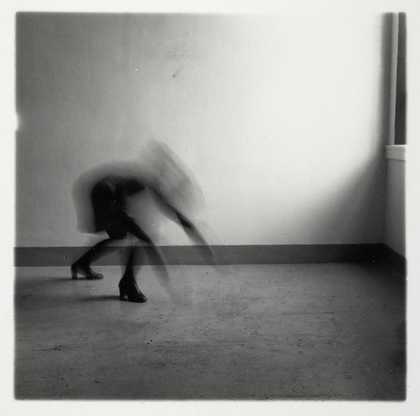
Francesca Woodman
Space², Providence, Rhode Island (1976)
ARTIST ROOMS Tate and National Galleries of Scotland
© Woodman Family Foundation / Artist’s Rights Society (ARS), New York and DACS, London
She is an art student, 20 years old, and she has booked a studio for a number of hours. She will have studied the corners of the floor and walls, where the windows are positioned and how she is going to make the light work. I’m guessing she has a few plans about how to proceed, but she’s also just going to play around.
She is her own subject, but she is embodying many other subjects.
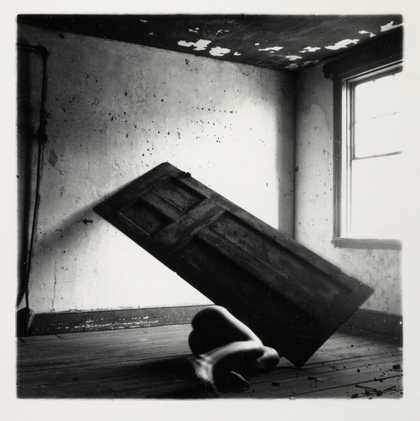
Francesca Woodman
Untitled, Providence, Rhode Island (1976)
ARTIST ROOMS Tate and National Galleries of Scotland
© Woodman Family Foundation / Artist’s Rights Society (ARS), New York and DACS, London
Look at her. There she is. She is all there, but she’s always trying to make herself disappear – to become vapour, a spectre, a smudge, a blur, a subject that is erased yet recognisable. Sometimes she disappears into the wallpaper, or is pinned naked underneath a door that seems to have spectrally fallen from nowhere, or hides her mouth behind an upturned umbrella – sculpturally exposing its starfish shape, the geometry of its interior. Woodman knows we know she’s there and by constructing techniques to make herself vanish, she knows she makes herself bigger. She makes herself bigger because we are searching for her. The artist, Francesca Woodman, has given us something to find. It’s a dance, a theory (perhaps a Lacanian theory: ‘la femme n’existe pas’), a performance, a provocation, an experiment, a joke, a question.
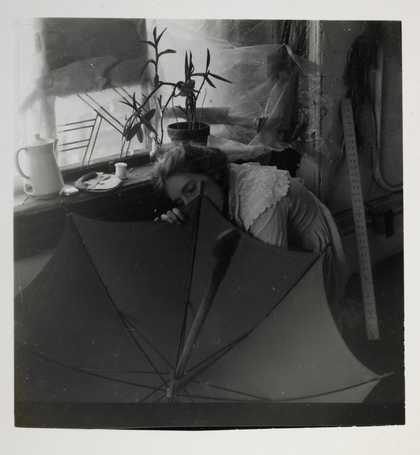
Francesca Woodman
Untitled (c.1980)
ARTIST ROOMS Tate and National Galleries of Scotland
© Woodman Family Foundation / Artist’s Rights Society (ARS), New York and DACS, London
I know she is art directing everything, working out how to do her trick. She is alert, supple, aligned, poised. If she’s making herself present by making herself absent then that is an equation easier to figure out with math or physics, but she’s doing it with art.
The boots are there to land this ethereal image. It’s so important to have a grip when we walk, as we have been societally taught to perform, into the frame of femininity – and as we step out of the frame too, into something vaguer, something more blurred. Francesca Woodman, the artist, can move freely in these boots, but they also pull her down. The image would suffer without their presence. Actually, I am wearing boots that are quite similar as I write this. In about five minutes from now, I’m going to switch off my computer, lock the door of my writing shed and walk to the tube station.
I think about Francesca Woodman’s inspiring images every time I write a female character and begin to embody her (make her present) in the world of my fiction.
‘When a female writer walks a female character into the centre of her literary enquiry (or a forest) and this character starts to project shadow and light all over the place, she will have to find a language that is in part to do with unknotting the ways she has been put together by the societal system in the first place. She will have to be canny as to how she sets about doing this because she will have many delusions of her own. In fact, it would be best if she were uncanny when she sets about doing this. It’s exhausting to learn how to become a subject; it’s hard enough learning how to become a writer.’*
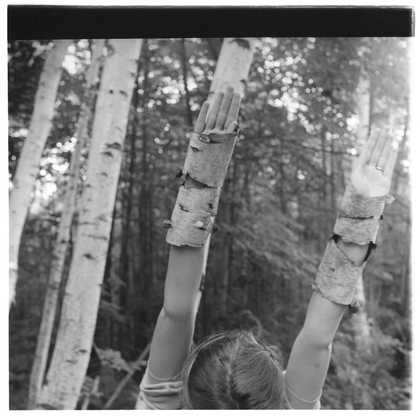
Francesca Woodman, Untitled, MacDowell Colony, Peterborough, New Hampshire 1980, gelatin silver print on paper, 20.3 x 25.4 cm
© Courtesy of Charles Woodman
Woodman was definitely making an uncanny language to unknot the ways in which we are encouraged to gaze at the female body. She was a genius, no doubt about it. I think she knew that too – her images are mischievous, exuberant, confident. She composed her first self-portrait at the age of 13, her face entirely concealed by her hair. Even then, she was learning how to become her own subject, playing with the techniques of long exposure and self-exposure.
Woodman stepped out of the world (suicide) at the age of 22. Ever since I was in my twenties, I have been gazing at the photographs she left in her archive. All these years later (she would be the age I am now), I still smile at the witty way she pretends to hide from the camera’s gaze. Her hand is on the shutter lead and she has placed herself at the centre of her composition.
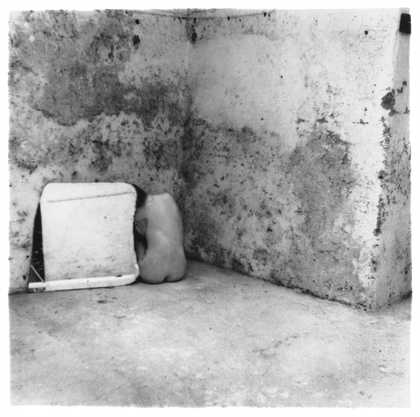
Francesca Woodman, Self-deceit #6, Rome, Italy 1978, gelatin silver print on paper, 20.3 x 25.4 cm
© Courtesy of Charles Woodman
Life in Motion: Egon Schiele / Francesca Woodman, Tate Liverpool, 24 May – 23 September.
Deborah Levy is the author of Swimming Home and Hot Milk, both shortlisted for the Man Booker Prize. Part two of her memoir, The Cost of Living, is published by Hamish Hamilton.
* From Deborah Levy's Things I Don't Want To Know, 2013

